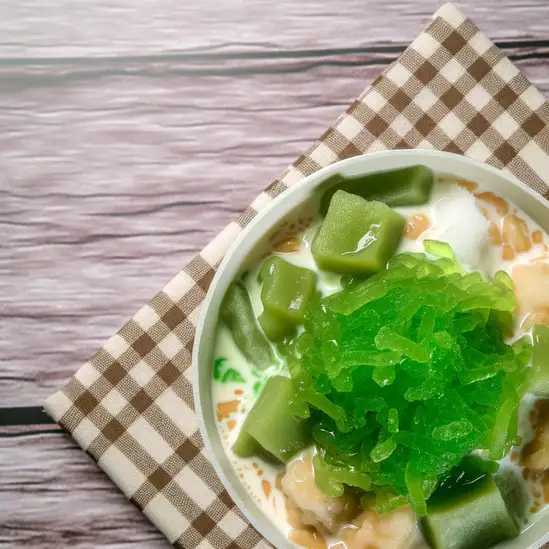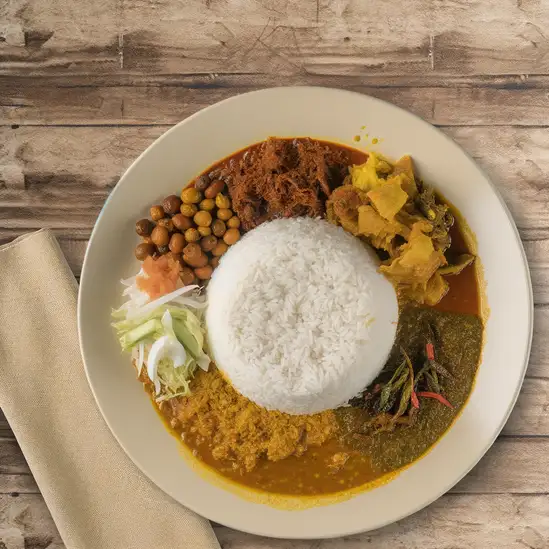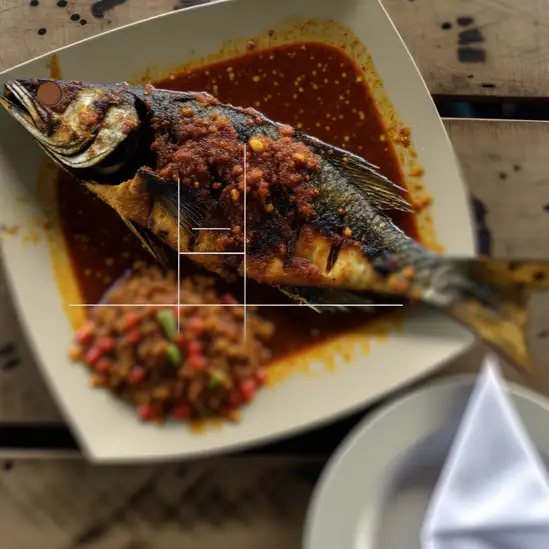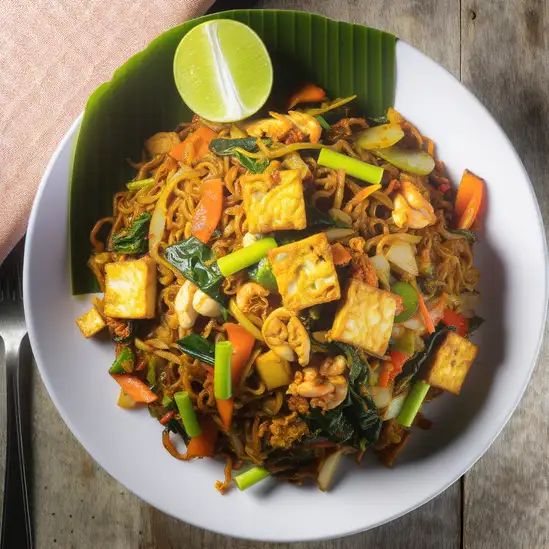



Labuan has this laid-back island charm that instantly makes you want to slow down and soak it all in. Imagine stepping off the ferry and feeling a gentle sea breeze mixed with the faint scent of tropical flowers and salty air. The pace here is unhurried,and the locals greet you with warm smiles that make you feel like you’ve stumbled upon a place where time moves just a little more kindly. It’s not just the calm waters or the swaying palm trees—it’s the way the island’s history whispers through its streets,blending colonial architecture with vibrant markets and cozy cafes. Walking around Labuan,you’ll hear the soft chatter of fishermen mending nets,the distant hum of boats returning with the day’s catch,and the occasional call of tropical birds. The food scene is a delightful surprise—fresh seafood grilled to perfection,rich with local spices,and sweet tropical fruits that taste like sunshine. Don’t miss trying the local laksa; it’s a comforting bowl of warmth that feels like a hug in a bowl. What really sets Labuan apart is its unique mix of cultures—Malay,Chinese,and indigenous influences all woven together in everyday life. It’s a place where you can explore World War II relics one moment and then find yourself sipping kopi at a bustling street stall the next. Labuan invites you to slow down,breathe deeply,and discover a side of Malaysia that’s refreshingly genuine and quietly captivating.
The information on this page is currently being reviewed by Tripkliq and should be used as a guide only
Eng word: Hello
Eng pronunciation: Ha-lo
Local language: Halo
Eng word: Goodbye
Eng pronunciation: Se-la-mat ting-gal
Local language: Selamat tinggal
Eng word: Thank you
Eng pronunciation: Te-ri-ma ka-sih
Local language: Terima kasih
Eng word: How much
Eng pronunciation: Be-ra-pa
Local language: Berapa
Eng word: Toilet
Eng pronunciation: Tan-das
Local language: Tandas
Eng word: Help me
Eng pronunciation: To-long sa-ya
Local language: Tolong saya
Eng word: Yes
Eng pronunciation: Ya
Local language: Ya
Eng word: No
Eng pronunciation: Ti-dak
Local language: Tidak
Eng word: Excuse me
Eng pronunciation: Ma-af
Local language: Maaf
Labuan is strategically located off the coast of Borneo, making it an important maritime hub in the South China Sea. Its location has historically made it a key point for trade and military operations.
Labuan was ceded to the British in 1846 and became a Crown Colony. It served as a coaling station and a base for British operations in the region, contributing to its development as a port city.
During World War II, Labuan was occupied by Japanese forces. It was later liberated by the Allied forces in 1945, marking a significant event in the island's history.
The Labuan War Cemetery is a poignant reminder of the island's role in World War II. It is the final resting place for many Allied soldiers who lost their lives during the liberation of Borneo.
In 1956, Labuan was declared a free port, which has significantly boosted its economy by attracting trade and investment, making it a vibrant commercial hub.
In 1984, Labuan was declared a Federal Territory of Malaysia, which has led to increased development and modernization, enhancing its infrastructure and economy.
Established in 1990, the Labuan International Business and Financial Centre (IBFC) has positioned the island as a key player in global finance, attracting businesses from around the world.
Labuan is home to a diverse population, including Malay, Chinese, Indian, and indigenous communities. This cultural diversity is reflected in its festivals, cuisine, and traditions.
The Chimney Museum is one of Labuan's iconic landmarks. It showcases the island's coal mining history and offers insights into its industrial past.
In Labuan, the most common Power Adaptor is Type G.


A flaky, buttery flatbread that is typically served with dhal (lentil curry) or other types of curry for dipping.

A spicy noodle soup with a coconut milk base, often featuring prawns, fish, or chicken, and garnished with fresh herbs.

A popular dessert made with shaved ice, coconut milk, green rice flour jelly, and palm sugar syrup, perfect for cooling down in the tropical heat.

A popular Malaysian dish consisting of steamed rice served with a variety of curries and side dishes, often enjoyed with fried chicken or fish.

Grilled fish marinated with spices and served with a spicy sambal sauce, often enjoyed with rice.

Stir-fried noodles with a mix of vegetables, proteins, and a savory sauce, often garnished with lime and chili.

A traditional soup dish made with meat (usually chicken or beef), vegetables, and spices, served with rice or noodles.
Imagine stepping into a place where the ocean breeze carries the scent of salty waves mingled with sizzling street food,and the sky melts into hues of pink and orange as the sun dips behind lush mountains. That’s Kota Kinabalu for you—a vibrant city that feels alive yet effortlessly laid-back. It’s the kind of place where you can wander through bustling markets filled with the chatter of locals,the clinking of fresh seafood on ice,and the rich aroma of spices from nearby stalls. The city pulses with a warm,welcoming energy that instantly makes you feel at home.
What really sets Kota Kinabalu apart is its seamless blend of nature and culture. You’re never far from the stunning backdrop of Mount Kinabalu,whose towering presence invites adventure and awe. At the same time,the city’s streets are a colorful tapestry of indigenous traditions,Malay influences,and Chinese heritage,all coming together in lively festivals,art,and food. Don’t miss trying the fresh seafood—imagine biting into a juicy,chili-laced grilled fish while the ocean breeze cools your skin.
Evenings here are magical. The waterfront comes alive with twinkling lights,the hum of live music,and the laughter of friends sharing meals under the stars. Whether you’re sipping a tropical drink or exploring night markets,Kota Kinabalu wraps you in a cozy,spirited embrace that stays with you long after you leave.
If you ever find yourself wandering through Kuching,you’ll immediately notice its gentle,laid-back rhythm—a city that feels like a warm hug rather than a bustling metropolis. The air carries a mix of tropical humidity and the faint,sweet aroma of street food sizzling nearby. As you stroll along the waterfront,the Sarawak River glistens under the golden afternoon sun,while the calls of local vendors and the chatter of families create a lively,welcoming soundtrack.
Kuching’s charm lies in its seamless blend of old and new. Colonial-era buildings with their faded pastel walls sit comfortably beside vibrant street art and cozy cafes. The city pulses with a rich cultural tapestry—Malay,Chinese,and indigenous Dayak influences weave through the markets,temples,and festivals. You can almost taste this diversity in the food:spicy Sarawak laksa that tingles your tongue,fresh tropical fruits bursting with flavor,and sweet,sticky kueh that melt in your mouth.
What really makes Kuching unforgettable is its genuine warmth. Locals greet you with smiles and stories,eager to share their heritage and favorite spots. Whether you’re exploring the lush Bako National Park just outside the city or sipping kopi at a bustling kopitiam,Kuching invites you to slow down,breathe in its unique spirit,and feel like you’ve found a place that’s both vibrant and deeply comforting.
Manila is this vibrant,bustling heart of the Philippines that grabs you the moment you step off the plane. There’s an energy here that’s both chaotic and warm,like the city is alive and breathing with stories waiting to be discovered. Walking through its streets,you’ll catch the scent of sizzling street food mingling with the salty breeze from Manila Bay. The soundscape is a lively mix of jeepneys honking,street vendors calling out their wares,and the occasional laughter spilling from a nearby sari-sari store.
What makes Manila truly special is its rich tapestry of history and culture woven into everyday life. You can wander through Intramuros,the old walled city,and feel the echoes of Spanish colonial days in the cobblestone streets and centuries-old churches. Then,just a few blocks away,modern skyscrapers rise,showcasing the city’s dynamic spirit. The people here are incredibly warm and welcoming,always ready to share a story or recommend their favorite spot for halo-halo,a sweet,icy treat that’s perfect for cooling down in the tropical heat.
Manila’s charm lies in its contrasts—the old and new,the quiet moments in hidden courtyards and the lively buzz of night markets. It’s a place where you can savor rich Filipino flavors,dive into vibrant festivals,and feel the pulse of a city that’s constantly evolving but never loses its heart. If you want a trip that’s full of life,color,and genuine warmth,Manila’s waiting with open arms.
If you find yourself wandering through Kota Administrasi Jakarta Pusat,you’ll immediately notice the pulse of a city that’s both historic and buzzing with modern energy. It’s a place where colonial-era buildings stand shoulder to shoulder with sleek skyscrapers,creating a fascinating blend of old and new. Walking down the streets,you can almost hear the echoes of history mingling with the chatter of office workers and street vendors. The air carries a mix of aromas—from the rich,spicy scent of street food stalls grilling satay to the faint,comforting smell of freshly brewed kopi from tiny warungs tucked in corners.
What really makes Jakarta Pusat special is its vibrant character. It’s the heart of the city’s administrative and cultural life,so you’ll find a lively mix of people—government officials,artists,students,and families—all weaving their stories into the urban fabric. The bustling markets,like Pasar Baru,invite you to haggle over colorful textiles and local snacks,while nearby museums and galleries offer a quiet retreat into Indonesia’s rich heritage.
There’s a rhythm here that’s both fast-paced and inviting. Whether you’re sipping a sweet es cendol under the shade of a tree in Merdeka Square or catching the golden light reflecting off the National Monument at dusk,Jakarta Pusat feels alive in a way that’s deeply human and endlessly fascinating. It’s a city that invites you to slow down,look around,and soak in the layers of life unfolding all at once.
Bangkok is one of those cities that grabs you the moment you step out into its bustling streets. There’s this electric energy in the air—a mix of honking tuk-tuks,sizzling street food stalls,and the chatter of locals weaving through markets. The city feels alive,like it’s constantly moving and breathing,yet somehow it balances this chaos with moments of serene beauty,like the golden spires of temples catching the afternoon sun or quiet canals reflecting the sky.
Walking through Bangkok,you’ll be hit by a whirlwind of scents:fragrant jasmine from flower vendors,the sharp tang of lemongrass and chili from street carts,and the sweet aroma of mango sticky rice tempting you at every corner. The colors are just as vivid—neon signs flicker alongside traditional wooden shophouses,and monks in saffron robes glide past modern skyscrapers. It’s a city where old and new dance together effortlessly.
What really makes Bangkok special is its warmth and openness. The people here have a genuine kindness that shines through,whether you’re bargaining at Chatuchak Market or sharing a laugh over a bowl of spicy boat noodles. The culture is rich and layered,from the intricate rituals at Wat Pho to the lively festivals that light up the streets. Visiting Bangkok feels like stepping into a story that’s still unfolding,full of surprises and moments that stay with you long after you leave.
Imagine stepping into a city where sleek skyscrapers meet lush greenery,and every corner hums with a vibrant energy that’s both modern and deeply rooted in tradition. That’s Singapore for you—a place where the air carries the fragrant mix of blooming orchids and sizzling street food,and the streets buzz with a blend of languages and laughter. Walking through neighborhoods like Chinatown or Little India,you’ll catch the rich aromas of spices mingling with the sweet scent of tropical fruits,inviting you to explore further.
What’s truly captivating about Singapore is how effortlessly it balances the fast-paced pulse of a global hub with pockets of serene beauty. You can be wandering through the futuristic Gardens by the Bay one moment,marveling at the towering Supertrees glowing softly at dusk,and the next,find yourself savoring a bowl of laksa or chili crab at a bustling hawker center,surrounded by locals chatting animatedly. The city’s character shines through its people—warm,diverse,and proud of their heritage,yet always welcoming.
There’s a rhythm here that’s both energizing and comforting. Whether you’re cycling along the waterfront,catching a sunset over Marina Bay Sands,or simply sipping kopi in a cozy café,Singapore invites you to slow down and soak in its unique blend of cultures,flavors,and sights. It’s a city that surprises you with its layers,making every visit feel like a new discovery.
Tourists may encounter vendors selling counterfeit products as genuine items, especially in markets.
Unlicensed money changers might offer poor exchange rates or give incorrect amounts of local currency.
Individuals posing as official tour guides may offer services and charge high fees without providing any real value.
Some taxi drivers may not use the meter and charge tourists inflated prices for short distances.
Tourists may be lured into attending presentations with promises of free gifts, only to be pressured into signing expensive timeshare contracts.
Malaysia has very strict drug laws, and this applies to Labuan as well. Possession, use, or trafficking of illegal drugs can result in severe penalties, including the death penalty for certain offenses. Tourists should avoid any involvement with illegal drugs and be aware of the serious legal consequences.
In Labuan, Malaysia, smoking is prohibited in certain public areas such as air-conditioned restaurants, public transport, government buildings, and other designated non-smoking zones. There are fines for violating these regulations, so tourists should be mindful of 'No Smoking' signs and designated smoking areas.
Vaping in Labuan is subject to similar restrictions as smoking. It is not allowed in non-smoking areas, and tourists should be cautious about using e-cigarettes in public spaces. The Malaysian government has been considering stricter regulations on vaping, so it's advisable to stay updated on any changes.
What are other people saying about Labuan?
Recent Social posts about Labuan
There is nothing to show you for now.